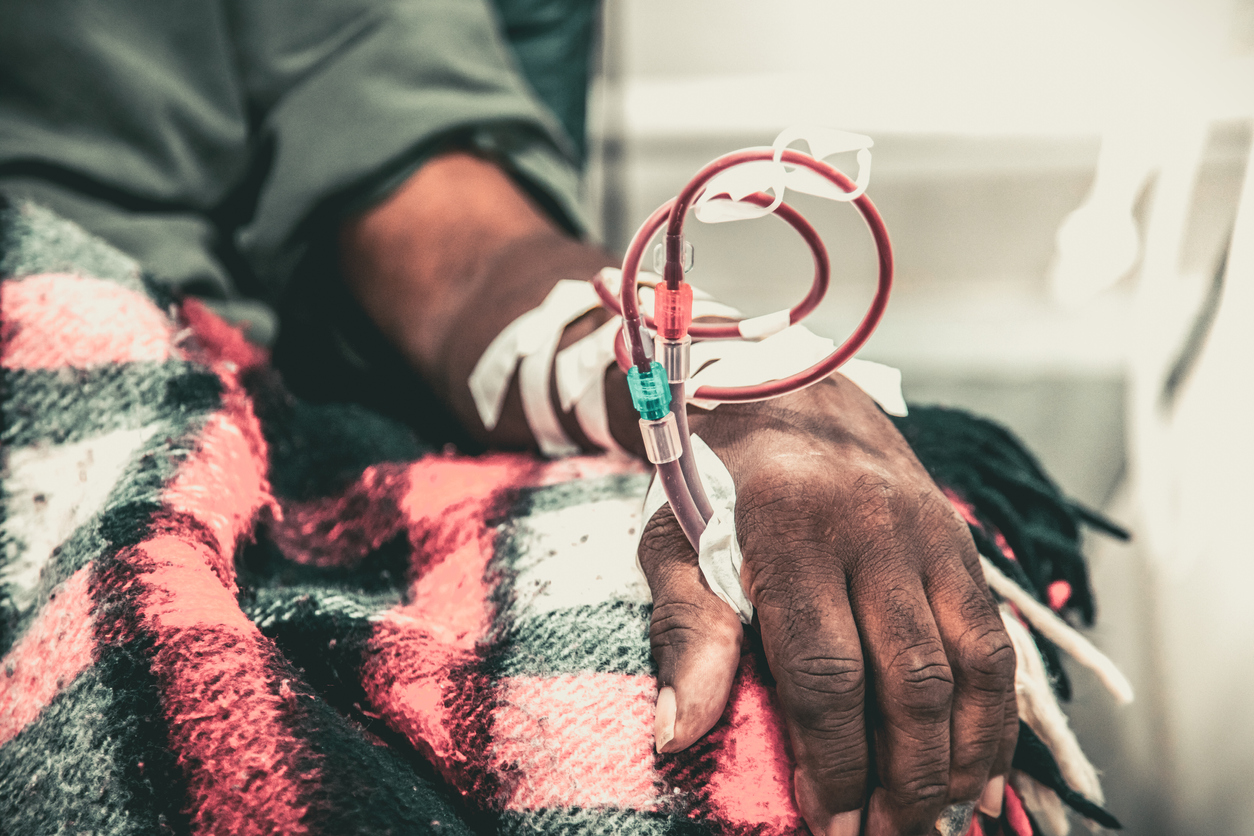
By Michelle Carver, Vice President Clinical Service Initiatives at Fresenius Kidney Care
If the idea of self-cannulating every time you dialyze seems impossible, you are not alone. Many people fear needles, especially the large ones used for dialysis. But trust me, when you learn to do it, you’ll wonder why you ever doubted yourself. It gives you control, may make your access site last longer and, believe it or not, hurt less.
One of my dialysis patients compared it to putting a cotton-tipped swab in your ear – would you rather do it yourself or have someone else do it? Only you – not your care provider – can feel both ends of the needle, so you know when and where to stop, which means fewer complications and missed sticks.
If you don’t believe you’ll ever be comfortable with self-cannulating, let me tell you about one of my patients. He planned to do home dialysis, so he needed to learn to self-cannulate, because there was no one at home who could do it for him. But he wouldn’t even look at me when I put the needle in. He said he’d do it the next day, but again, he wouldn’t look. I told him he would have to do it if he wanted to dialyze at home, so finally he gave it a go. He put one needle in, had no problem, and from that day forward never let another professional cannulate him. Previously he had stayed close to home, but after learning to self-cannulate, he traveled all over the world. Overcoming the fear was the key to his freedom and independence. It can be yours, too.
Here’s how it works:
- We teach you. You’ll come into the center for four weeks and we’ll teach you how to cannulate step by step. We offer lots of tools and have a number of teaching methods. Because putting the needle in the first time is scary, you may start by doing it in reverse — by removing the needle after a treatment. The tandem hand technique involves putting your hand on the care team member’s hand and following it as the needle is placed. Then you’ll switch, and the provider will put his or her hand on yours and guide you as you place the needle. After a few times you’ll wonder why you were so stressed out about it. Our social worker can also work with you on ways to relax and de-stress, as well as, teach you some relaxation exercises.
- We give you tips. Using numbing cream can help with the pain, although most patients find they don’t need to use it after a while. Using reading glasses helps, even if you don’t normally wear them, because it magnifies everything and makes it easier to see the beveled part of the needle. A head lamp frees up your hands and using a one-handed tourniquet helps you see and hit the mark more easily. Pillows help you position your arm, so the access is just right. After you’ve placed the needles, we’ll show you how to secure them by taping them and using pantyhose to keep the lines and needles in place so you can focus on computer work, crocheting, reading, or whatever you need to do during treatment.
- We support you. We give you lots of practice and make sure you are 100% comfortable before you self-cannulate. If you dialyze at home and have questions or concerns, a nurse is available 24/7 and you can call anytime you need help or have questions.
- Options for access. There are two methods for cannulation:
- Site rotation is the traditional method and most common method, in which you place your needle in a different place every single time. It is the only option if you have a graft.
- Buttonhole ®, or constant site cannulation, in which you put the needle in the exact same spot multiple times. After about two weeks a track is formed and you can switch from sharp needles to blunt or dull needles, which prevents you from placing a needle outside the blood vessel. Patients say it’s easier because you don’t have to find a new spot every time – it’s like putting an earring in a pierced ear. Eventually the track is almost painless. A small scab forms over the access and is removed before the needles are placed for the next treatment. It doesn’t hurt to remove the scab, but you need to be sure you have excellent infection control techniques to reduce the risk of infection. The buttonhole technique is primarily reserved for patients who are dialyzing at home and can only be used with a fistula.
Self-cannulation gives you control. Because you become so proficient and get to know your body and the process so well, you will very quickly notice even slight changes or issues earlier than others might, so you can quickly address them with your provider. Although you can self-cannulate at the center, it opens the door for home dialysis, which gives you more freedom.
Sound intriguing? Talk to your care team about learning how to self-cannulate.
Michelle Carver, BSN, RN, CNN, is the Vice President Clinical Services Initiatives at Fresenius Kidney Care. Michelle has over 20 years of experience in dialysis nursing care specifically in peritoneal and home hemodialysis training and support. She currently focuses on developing and implementing standardized processes for improving clinical outcomes for dialysis patients.




